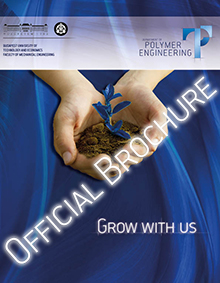Development of custom micro-structured surfaces for improved lubrication in shoulder implants
Ágnes Ureczki
Dr. Norbert Krisztián Kovács
Project summary
In the current orthopaedic practice, prosthetic replacement of irreversibly damaged joints is well established. These implants wear out and become loose with time. Aseptic loosening of the implant, that is loosening in the lack of infection, is rooted in mechanical factors as well as immune mediated osteolysis triggered by wear debris. The latter manifests in the form of bone loss around the implant. Hence it is necessary to minimise wear and consequently the debris load to improve artificial joint survival. As in most orthopaedic joint implants, also for shoulder replacements, polyethylene (PE)-metal contact surfaces are used most frequently. E.g. in a typical anatomical total shoulder implant, the sliding pair consists of the PE socket and the metal head on top of the humeral stem. In contrast to a hip prosthesis, in which the ball moves in the socket without translational motion, translation of the ball in the socket is possible in the shoulder prosthesis, resulting in a motion with five degrees of freedom. There is a large scale discrepancy between the in vitro and in vivo performance of artificial shoulder joints. In the pilot stage three major problems were identified: - inadequate testing methods (the performed uni- and biaxial wear tests do not represent the reality), - insufficient lubrication in vivo in spite of the fact that orthopaedic implants are surrounded by synovial fluid (original cartilage serves as a reservoir, while fluids can completely escape from between the joining surfaces of artificial implants) - insufficient mechanical properties of polyethylene (prone to edge wear/deflection, creep, pitting). Artificial joint lubrication is presently an important research matter. One recent publication tested microdimples in a hard-on-hard surface joint model. Although the described results were promising, the experimental set-up included continuous movement between the contact surfaces which is unrealistic. Other current trends to improve joint lubrication comprise the use of liposome lubrication, surface treatments such as ultrasmooth polyelectrolyte coatings and the use of polyethylene glycol (PEG) in the lubricating fluid. Although in vitro these techniques all had positive results, they all have their limitations for an in vivo application, either because it would be hard to maintain the surface properties, e.g. for liposome lubrication, either because it might be difficult to provide constant supply of PEG to the joint. In this research we intend to address the previously mentioned problems with these aims: - design and test a bionicle concept artificial joint lubrication system, mimicking the in vivo biomechanics with cutting edge engineering based on additive manufacturing, - use a novel test machine with 5 degrees of freedom, simulating the challenging shoulder mechanics, previously designed by SUH and, - testing of alternative bearing surfaces with a porous structure obtained from Voronoi cells (inspired by original cartilage structure, oilite(R) bearings) and intrinsic surface micro-structures (inspired by multi-lobe bearings), - develop artificial synovial fluid to aid this and further research by stable structure, long-term stability.
Project results
Project-related publications
- Keszei K., Kovács N. K.: Személyre szabható ízületi protézisek alternatív polimer anyagai és gyártástechnológiái. Polimerek, 7, 89-96 (2021)






